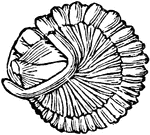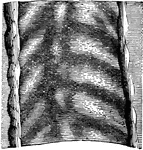Clipart tagged: ‘trilobite’

Agnostus Nudus
"Four stages in the development of the trilobite Agnostus nudus. A, Youngest stage with no mesosomatic…

Calymene
"The trilobite's general form is shown in the annexed figure of the Calymene Blumenbachii;…

Limulus Polyphemus
"So-called "trilobite stage" of Limulus polyphemus. A, Dorsal; B, ventral view." — The Encyclopedia…

Trilobite
"Vertical cross-section of a Trilobite (Calymene). i., Intestine; s., shield; L., endopodite; e., exopodite;…

Asaphus Gigas a Trilobite
Asaphus is a genus containing at least 35 species of Ordovician trilobites found primarily in Europe.…

Dicellocephalus Minnesotenis a Trilobite
Trilobites ("three-lobes") are extinct marine arthropods that form the class Trilobita. Why the trilobites…

Dicellocephalus Minnesotenis a Trilobite
Trilobites ("three-lobes") are extinct marine arthropods that form the class Trilobita. Why the trilobites…

Dicellocephalus Minnesotenis a Trilobite
Trilobites ("three-lobes") are extinct marine arthropods that form the class Trilobita.The earliest…


